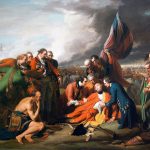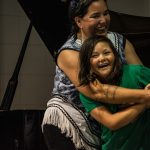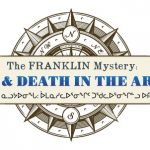By John Myers
In the last blog post I outlined the project and the conditions under which the FNMI project was done. One of the messages was and still is to start somewhere and not let the challenges scare you into inaction. Experienced writers say that the blank page is the hardest step to overcome. This has certainly been the case for decades in all sorts of curriculum areas, including history and social science curriculum.
Another message is that we CAN do decent work. Once we start we get feedback and improve (assessment AS and FOR learning).
As many of you know, slideshare is an open source portal to slide presentations on many topics. The content is of varying quality but the following is an easy-to-read overview of the James Banks’ four approaches to multicultural education.
https://www.slideshare.net/keziamae/multicultural-education-45874904.
The lessons follow an agreed template by the class. The topics are as follows and attempt to provide an indigenous perspective based on the revised curriculum expectations:
- Terms and Vocabulary- which ones, why and how to teach
- Review of Concepts Taught in grades 4-6,- a diagnostic assessment
1713-1800 Strand
- Introduction to 18th century North America
- Perspectives on the Seven Years War and the Treaty of Paris
- Society in British North America – What does “home” look like to you?
- The American Revolution and Joseph Brant
1800-1850 Strand
- War of 1812
- Immigration
- 1812-1830 and the Development of Transportation
- The Franklin Mystery: Life and Death in the Arctic – Why people who were considered to be technologically disadvantaged survived in the Arctic while Europeans perished?
Overview:
This unit plan will be a grade 7 history unit that will seek to teach students about different significant events, people and perspectives in Canadian history using the two strands from the Ontario social studies curriculum. The two strands include 1713-1800 and 1800-1850 using an Indigenous and FNMI framework throughout. The unit will begin with a review of previous concepts and content in the junior division, as well as key terms. What follows is an inquiry and source-based history unit that covers major figures, events and societies from 1713-1850 within a Canadian context but also includes global historical events that impacted Canada. Each lesson will be structured using FNMI curriculum expectations in order to ensure that Indigenous perspectives are thoroughly considered in every aspect of the content delivered. The summative project will be an opportunity for students to demonstrate their learning(s) and apply their knowledge to the culminating activity. Overall, the unit provides students with a holistic understanding about the different historical thinking concepts and integrates resources and content to ensure that students have an awareness and appreciation for Indigenous perspectives and knowledge in Canadian history.
Unit Question:
Why might different people have viewed similar events in different ways? What kinds of factors do you think would have affected the decisions made by different people(s) in response to these events?
Culminating Task
We did not have time to design something but we did discuss possibilities. The following example came from Mary Kate Grey whose lesson will conclude the series.
“At the beginning of the year, students would be asked to consider their own identity and their own relationship to the land. This of course would have been “scaffolded” and probably would make assumptions in the overall unit that the students already were introduced to Indigenous ways of knowing. They could do an art piece. At the end of the year, they could be asked the same question and see how their perspectives changed (or not). They could write a reflection (since everyone loves reflecting) and draw or create a video or something like that that illustrates a shift in thinking if it occurs: a “visible thinking” approach.”
Remember that these were opening efforts within tight timelines. We did take time in class to share, critique, and refine the work.
Some of the books reviewed in the ongoing series currently in Rapport can add to what is here as well as in high school grades.
In many ways the project was developed like an improvisational theatre ensemble develops. Its success is based on:
- trust
- taking risks
- supporting the team: “yes and” not “yes but”
- keeping the conversation going
- constructive feedback (in improv this is often called “side coaching”).
As a young teacher I explored aspects of indigenous and multicultural education, largely on my own and with the help of my students. In some ways this project represents the failure of “doing the right thing” in past decades. Since we know, or ought to know, more about how to make change last in the minds and hearts of our students and ourselves, we must do better. The Calls to Action from the TRC ask for no less.
We hope you enjoy the work and appreciate these opening steps while you build on them and design more culturally responsive curriculum that reflects what Canada is and will be.
John Myers conducted this project while working with social studies teacher candidates at OISE in Toronto.


